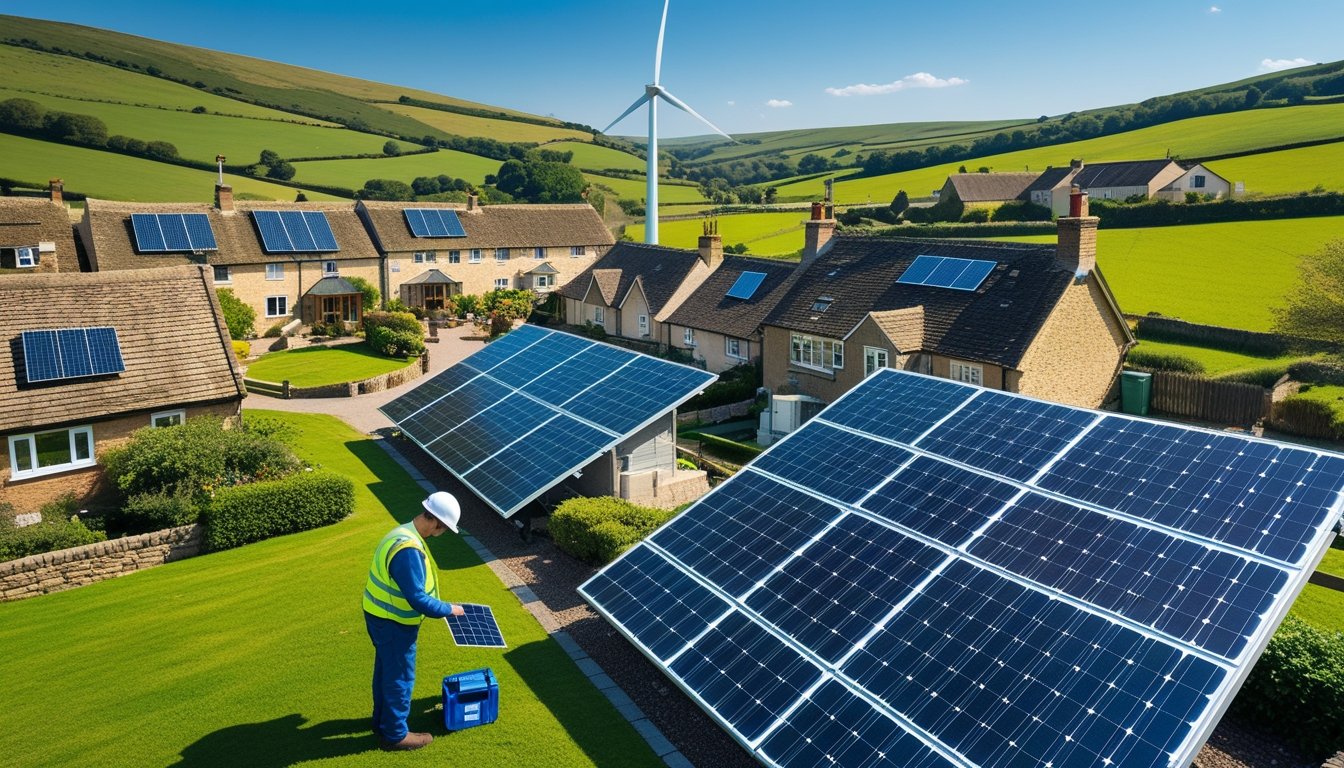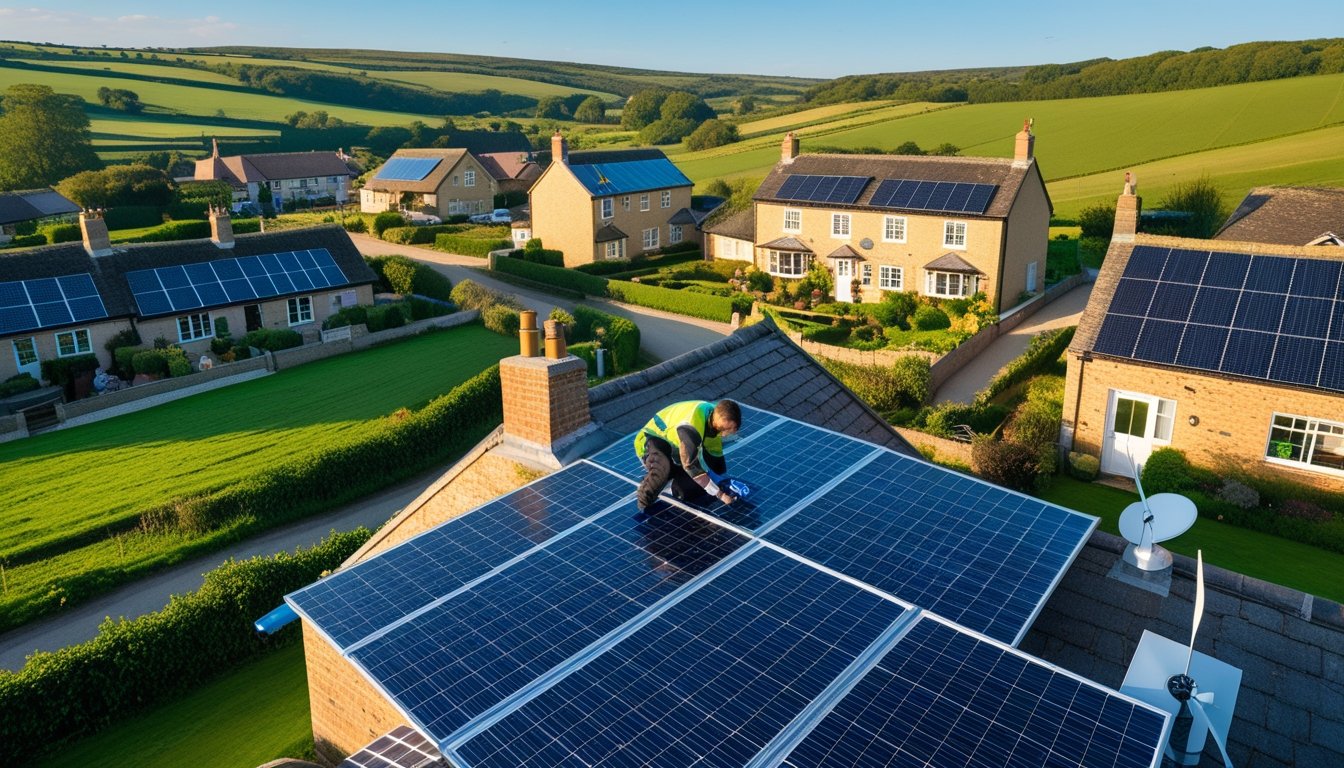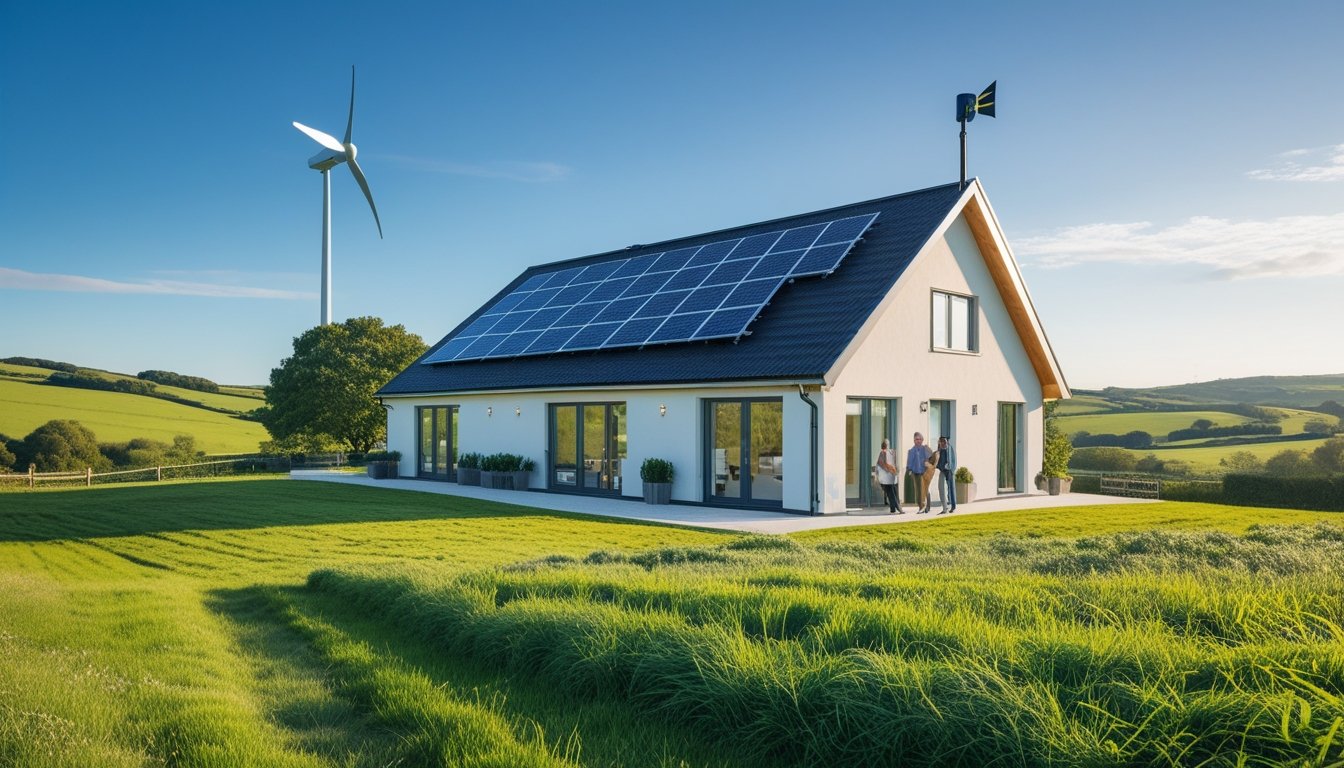Late updated: 16 Aug 2025 14:08
Written by: Oliver Bennett
Optimising Renewable Energy for Rural UK Homes: Strategies and Benefits
Exploring renewable energy options in rural UK homes opens a realm of possibilities for enhancing energy efficiency and promoting sustainability. Optimising these homes with renewable systems like solar panels, wind turbines, and smart energy storage significantly boosts energy independence and reduces utility costs. This transformation not only supports national goals for carbon reduction but also enhances the quality of life in rural areas.

Energy management systems play a pivotal role in making these optimisations effective. By integrating smart devices, homeowners can monitor and adjust energy consumption and production. This advanced technology facilitates a seamless transition to renewable energy, helping us strike a balance between cost-efficiency and environmental responsibility.
Despite the promising benefits, we must consider challenges such as legal requirements and initial expenses. Examining these factors consolidates our understanding and helps us make informed decisions when adopting renewable solutions. Ultimately, the goal is to provide rural communities with the tools needed to embrace a greener future.
Key Takeaways
- Renewable energy optimises cost and efficiency in rural UK homes.
- Smart energy systems aid in managing and maximising renewable energy.
- Overcoming legal and financial barriers ensures successful implementation.
Core Strategies for Optimising Renewable Energy in Rural UK Homes

In rural areas of the UK, optimizing renewable energy use is crucial. Effective energy management includes improving home energy efficiency, using solar panels and wind turbines, and maximizing battery storage and off-grid systems.
Assessing and Improving Home Energy Efficiency
For rural homes to benefit from renewable energy, it's essential to assess and improve energy efficiency. Implementing insulation improvements and upgrading to energy-efficient appliances are initial steps we can take. Our focus should be on reducing energy loss, which commonly occurs through poorly insulated roofs, walls, and windows.
Using smart energy devices to monitor energy consumption patterns allows us to make data-driven decisions to optimize our resource use. An energy-efficient home reduces overall energy demand, making it easier to rely on renewable sources. By ensuring rural homes have a high EPC rating, we set a strong foundation for integrating additional renewable systems.
Implementing Solar Panel and Wind Turbine Solutions
For rural living, solar panels and wind turbines present viable solutions. The installation of solar panels harnesses solar power to generate clean electricity, offering an effective method to reduce reliance on the national grid. The abundance of space and sunlight in many rural areas benefits the efficiency of solar systems.
Additionally, small-scale wind turbines offer an excellent complement to solar panels, particularly in windy regions. We need to consider local climate conditions and energy needs to determine the optimal mix of these technologies. Grants and incentives, such as the Homes Upgrades Grant, can aid rural homeowners in funding these installations.
Maximising Battery Storage and Off-Grid Systems
Battery storage systems play an essential role in managing renewable energy. By storing excess energy generated by solar panels or wind turbines, we can ensure a reliable supply during times when production is low or consumption is high. This capability is advantageous for off-grid communities seeking energy independence.
Lithium-ion batteries are particularly popular due to their efficiency and capacity. Off-grid systems are a sustainable choice for isolated rural residences, enhancing self-sufficiency and reducing carbon footprints. Integrating these energy storage solutions allows for more flexibility and security in our energy sourcing, paving the way for a cleaner and more sustainable future.
Advanced Heating Technologies and Policy Considerations
Renewable energy solutions are essential for transforming rural UK homes into efficient and sustainable living spaces. By exploring the latest in heating technologies and understanding relevant policy measures, we can significantly reduce carbon emissions and promote cleaner energy alternatives.
Integrating Heat Pumps and Biomass Energy
Heat pumps are pivotal for energy-efficient heating. Both air source and ground source heat pumps extract heat from the environment to warm homes. Air source pumps capture heat from the air, whereas ground source pumps utilise the earth's constant temperature. In rural areas, this technology offers significant energy savings.
Biomass energy, involving organic materials like wood pellets, can be a sustainable fuel alternative. Combining biomass systems with heat pumps maximises efficiency. Such hybrid systems not only lower greenhouse gas emissions but also improve energy security. For rural communities, these technologies present viable pathways towards achieving net zero goals.
The Role of Hybrid Systems and Boilers
Hybrid heating systems integrate traditional boilers with renewable technologies, providing a balanced energy solution. By utilising both renewable energy and conventional boilers, rural homes can achieve efficient year-round heating. These systems allow the flexibility of switching between energy sources depending on demand and availability.
Modern hybrid systems often include solar panels or small wind turbines, contributing further to reducing carbon emissions. This flexibility ensures a consistent energy supply even in remote areas, where renewable resources might vary. For effective implementation, it’s crucial to tailor solutions based on specific regional and climatic needs.
Government Incentives and Planning Permissions
Government incentives play a critical role in promoting renewable technologies. Schemes such as the Renewable Heat Incentive (RHI) provide financial support to those adopting low-carbon heat solutions. Understanding these incentives is vital for homeowners looking to make a sustainable transition.
Planning permissions can be a hurdle for deploying renewable systems. Simplifying these processes encourages broader adoption. By ensuring policy frameworks align with environmental goals, we can facilitate easier installation of technologies like solar batteries and wind turbines. Promoting efficient resources in rural settings supports both energy independence and sustainability.
Frequently Asked Questions

In rural UK areas, adopting renewable energy involves optimising systems like solar and wind, understanding government financial support, and addressing geographic challenges. We delve into these critical areas to help you make informed decisions.
What are the most effective strategies for improving the efficiency of solar panels in UK's rural areas?
Enhancing solar panel efficiency often involves strategic placement, regular cleaning, and the use of micro-inverters. In rural settings, maximising sunlight exposure by placing panels on south-facing roofs can be particularly effective. Investing in monitoring systems can also help track performance and detect issues early.
How can wind energy be optimally integrated into the power systems of rural homes in the UK?
To integrate wind energy effectively, selecting the right turbine size relative to wind availability is crucial. Rural UK areas can benefit from small-scale turbines placed on open land with consistent wind flow. It's often useful to combine wind with other energy sources like solar for a reliable supply.
What subsidies and grants are available for rural UK homeowners looking to install renewable energy systems?
The UK government offers several initiatives, such as the Green Homes Grant, to support the installation of renewable technologies. These grants can cover a portion of the costs for solar panels, wind turbines, and other technologies. Homeowners should check local council schemes which might offer additional support.
What are the key considerations for ensuring the reliability of renewable energy in remote UK locations?
For reliability, it's important to have a well-designed system that can store excess energy, like battery storage solutions. Regular maintenance is key to prevent system failures. Additionally, diversifying energy sources by combining solar, wind, and possibly hydropower can ensure consistency in energy supply.
How does the climate and geography of rural UK regions affect the choice of renewable energy solutions?
Climate and geography directly impact energy choices. In regions with less sunlight, wind or hydropower might be more effective. Hilly or coastal areas might experience more wind, making turbines more viable. Site-specific assessments can help determine the best solutions based on local conditions.
What are the latest technological advancements in renewable energy suitable for rural homes in the UK?
Recent advancements include more efficient solar panels, improved battery storage technologies, and smarter energy management systems. These innovations help us optimise energy use and integrate various renewable sources seamlessly. Updates in grid integration technologies are also important for better managing energy supply and demand in rural areas.
